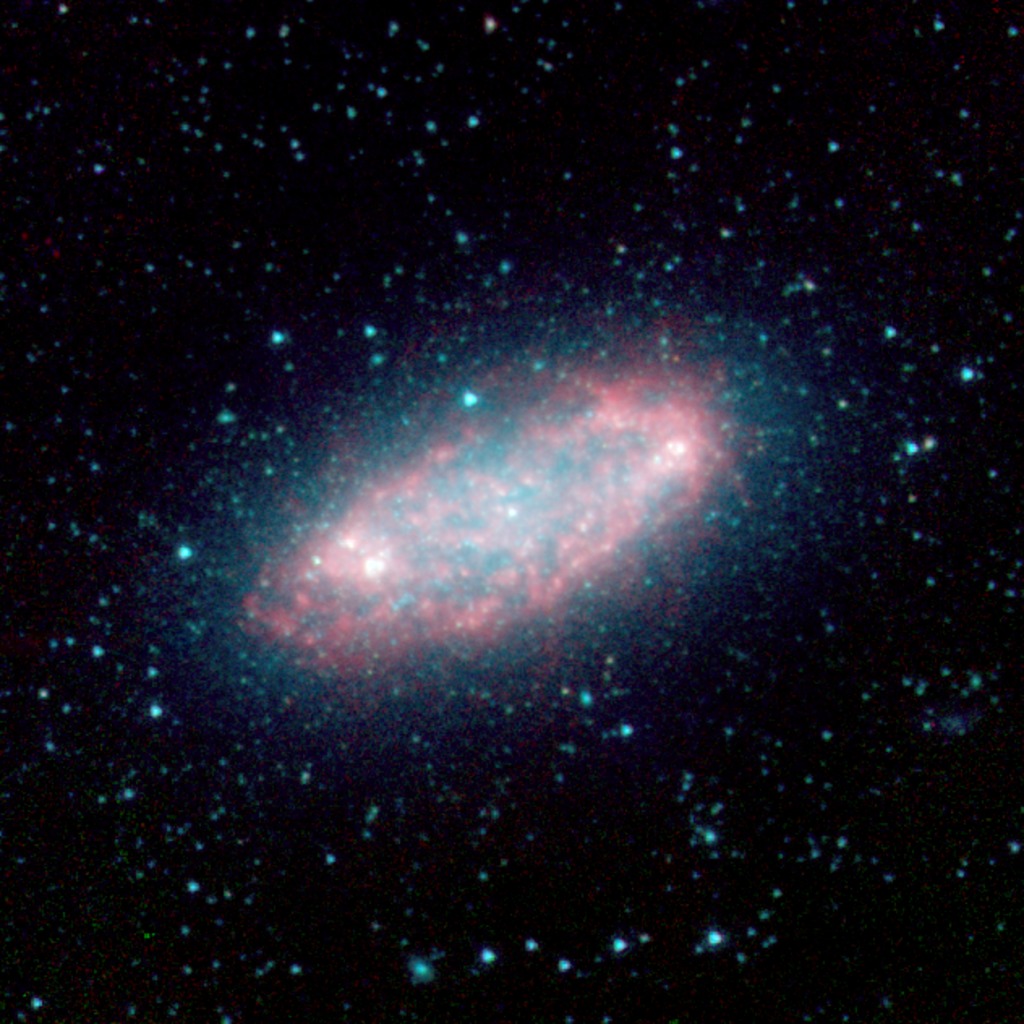
Credit: NASA/JPL-Caltech/R. Kennicutt (University of Arizona) and the SINGS Team
Observation • September 15th, 2005 • sig05-014
sig05-014
The nearby galaxy NGC 2976, located approximately 10 million light-years away in the constellation Ursa Major near the Big Dipper, was captured by the Spitzer Infrared Nearby Galaxy Survey (SINGS) Legacy Project using the telescope's Infrared Array Camera (IRAC). Unlike other spiral galaxies where the star-forming and dusty regions highlight spiral arms, this galaxy has a rather chaotic appearance.
As the "glowing" red emission maps out, Spitzer is able to pierce through dense clouds of gas and dust that comprise the spiral disk, revealing new star formation that is driving the evolution of the galaxy.
The SINGS image is a four channel color composite, where blue indicates emission at 3.6 microns, green corresponds to 4.5 microns, and red to 5.8 and 8.0 microns. The contribution from starlight (measured at 3.6 microns) in this picture has been subtracted from the 5.8 and 8 micron images to enhance the visibility of the dust features.
About the Object
- Name
- NGC 2976
- Type
- Galaxy > Type > Irregular
- Galaxy > Activity > Starburst
- Distance
- 10,000,000 Light Years
- Redshift
- 0.000010
Color Mapping
| Band | Wavelength | Telescope |
| Infrared | 3.6 µm | Spitzer IRAC |
| Infrared | 4.5 µm | Spitzer IRAC |
| Infrared | 5.8 µm | Spitzer IRAC |
| Infrared | 8.0 µm | Spitzer IRAC |
Astrometrics
- Position (J2000)
- RA =9h 47m 42.7s
- Dec = 67° 54' 55.0"
- Field of View
- 7.9 x 7.9 arcminutes
- Orientation
- North is 148.6° left of vertical



